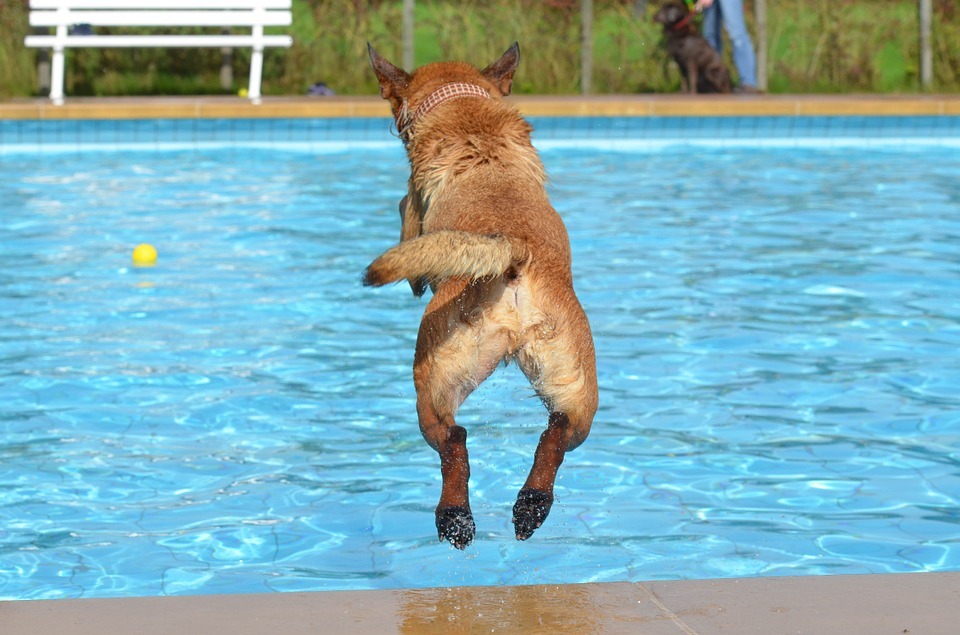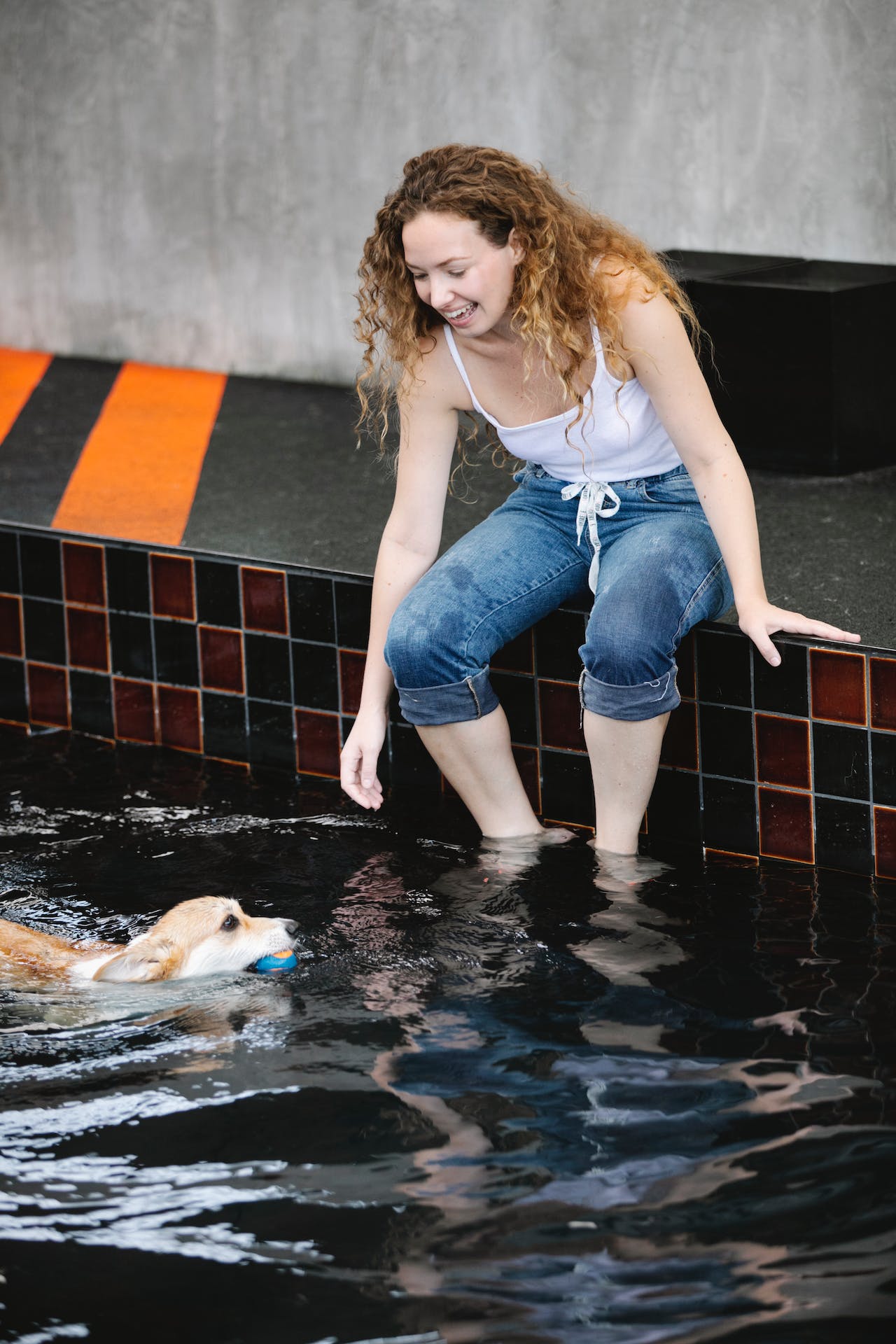Dogs are our family and we love to think our dogs to perceive all the ‘human fun’ we have. Well, we all have seen people taking their dogs to the pool with them and getting them a portable dog pool in a backyard. But is it appropriate? Well, the short answer is yes, you can let your dog swim in the pool. But, you need to ensure safety and keep in mind some points. Here are the factors you should consider when you’re thinking of letting your dog swim in the pool.
Health and Safety Considerations
When introducing your dog to pool time, health and safety should be top priorities. Before allowing your dog to swim, it’s important to assess their overall health and fitness. Older dogs, dogs with health issues, or breeds prone to joint problems may require special considerations. Always start with short swimming sessions to gauge your dog’s stamina and ability to cope with the physical demands of swimming. Additionally, ensure that your dog knows how to exit the pool safely. It’s advisable to have a ramp or stairs and to train your dog to use them. Always supervise your dog while swimming, as even strong swimmers can get into trouble.
Moreover, be mindful of the effects of chlorine and other pool chemicals on your dog’s skin and coat. Rinse your dog with fresh water after swimming to remove any chlorine residue, which can cause skin irritation or dryness. Also, monitor your dog for any signs of an allergic reaction or discomfort following a swim.
Training and Safety Equipment
For dogs that are new to swimming or are hesitant swimmers, consider using dog life vests for added safety. Life vests provide buoyancy and help dogs feel more secure in the water. It’s also a good idea to introduce your dog to the water gradually. Start by allowing them to explore shallow areas and gradually encourage them to venture deeper. Use toys or treats to make the experience positive and rewarding.
Training your dog to respond to commands while in the water is also crucial. This can include commands to enter or exit the pool, swim to a certain area, or stop swimming and rest. Such training enhances safety and ensures that both you and your dog enjoy the swimming sessions without undue stress or risk.
Dog Breeds that are Water Friendly
Most dogs love water and can swim. But there are some breeds that are not made for swimming and they should not be forced to do so either. Here are some breeds who do not make good swimmers: Shih Tzu, Staffordshire Bull Terrier, Boxer, Corgi, Chow Chow, Basset Hound, Bulldog, Maltese, Dachshund, Pug, etc. If your dog breed is not listed in this and you think your dog is not able to swim please research your dog’s breed online if it is a swimmer breed or not.
That said if your dog falls into the category that can swim, it is ok to let your dog swim in the pool or have fun in a dog pool in your backyard. This is the foremost condition to let your dog enjoy the water.
Sanitation Considerations
The sanitation need for a dog is equivalent to that of three humans. A pool should always be cleaned thoroughly after your dog uses it. Your dog might pee and poop in the pool and you literally cannot do anything about it. However, I have observed some dogs get out of the pool and do their business outside. But yeah, if your dog has an accident inside, they are not at fault.
Apart from their excretion, they also spoil water with their body oils, dirt, and anything else stuck on their coat and inside their nails and ears. You might have observed more chlorine than usual in dog pools and the reason behind this is the high sanitation needs of dogs.
Most people are concerned about the chlorine used in water and its harmful effects. It’s safe for your pooch to swim in chlorinated water unless you observe any abnormal behavior and visible symptoms in your dog.
Increased Maintenance
The overall maintenance is increased when dogs use the pool. Filters are to be cleaned and changed more frequently and the maintenance increases especially in the time of summer when the swimmer load including dogs increases. Ensure that you disassemble DE (diatomaceous earth) filters well, wash grids thoroughly, and re-charge the skimmers with the right amount of DE. Also, you need to clean cartridge filters by taking them out completely.
In addition, skimmer baskets and pool pump pot must be cleaned thoroughly every day because dog hair gets stuck inside them. If not cleaned properly, water circulation in the pool slows down and in the worst case, pool equipment fails.
Chemical Balance of Pool Water
A chemically balanced pool is necessary for anyone who swims in. No matter how much you do to check the chemical balance in pool water, there are times when a pool needs a specialty treatment. And for that, you should contact a pool service company or you can take the water sample yourself to their office for testing. But ensure that you tell them that your pets swim in it.
A general guideline suggests that you should check and balance water weekly. But the need to do so can be more frequent depending on a load of swimmers. Also, you should add 2-3 pounds of granular chlorine in your pool if you have a white plaster pool. All in all, a chemically balanced pool is crucial for your pets and if you’re not sure how to do it, you should always seek professional help.
The daily basis checking includes the proper circulation, visual inspection for the clarity of the water, and if you can see the bottom of the pool. If you find your pool cloudy, it’s time to improve the water quality.
Final Thoughts
Allowing your dog to join in on the pool fun can be a delightful experience for both pet and owner. However, it requires careful consideration of the dog’s breed, health, and safety. Regular pool maintenance, chemical balance checks, and proper sanitation are essential to ensure a safe and enjoyable environment for your dog. Additionally, being mindful of your dog’s health and safety, providing the necessary training, and using safety equipment can significantly enhance the experience. With these measures in place, you and your furry friend can enjoy many happy and healthy swimming sessions together.
These are the basic and crucial points to keep in mind to make sure that the pool is safe for your pooch to swim in. You should also teach your dog how to swim if he has never been introduced to water before. And also if you have a senior dog, you have to make sure that your dog can easily access the pool and getting in and out of the water is not painful for them. You can use dog pool ramps in that case. Remember, a well-prepared and safe environment is key to ensuring that pool time is a positive experience for your beloved pet.


